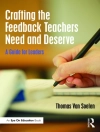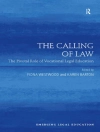‘Helps with planning content, methodology, and assessment and gives an overview of current trends that directly impact the classroom. The illustrations are great, the charts make it easier to understand, the style is easy to read, and the research discussed leads directly into practical ideas that all teachers can use.’
—William Fitzhugh, Second Grade Teacher, Reisterstown Elementary School, MD
Reframe instructional practice in your differentiated classroom through successful curriculum mapping!
Curriculum mapping has evolved as an invaluable communication, planning, and teaching tool. Using this dynamic method, educators can document what is being taught, what students are learning, how well they are learning, and how closely the curriculum reflects local and national standards. This lively, easy-to-use resource is a cohesive and accessible guide to curriculum mapping and instructional planning for classrooms that support diverse learning styles and needs.
With a ‘Teacher′s Tool Chest’ that offers an abundance of reproducibles, templates, and task cards to accompany sample lessons and units, this rich reference shows educators how to:
- Use standards and rubrics for developing interdisciplinary units and lessons
- Analyze and assess students′ learning styles and needs
- Develop differentiated content, process, and products, including homework
- Create a student-centered classroom
- Successfully integrate curriculum mapping, differentiated instruction, and interdisciplinary units within a manageable framework
This remarkable handbook provides everything teachers need to revitalize the relationship between standards-based curriculum and instruction, using real-life strategies that work!
Daftar Isi
Foreword
Preface
Acknowledgments
About the Authors
1. Reframing Instructional Practice for New Challenges in Education
2. Six Factors That Help Create a Student-Centered Classroom
3. Curriculum Mapping
4. Using Standards and Rubrics
5. Assessing Students′ Learning Styles and Needs
6. Differentiating Content, Process, Products, and Homework
7. Blended Models: Mapped, Differentiated, and Interdisciplinary Units
8. Teachers’ Tool Chests
Glossary
References
Index
Tentang Penulis
Janice Yost has Masters Degrees in both Educational Administration and Mathematics earned from the University of New Hampshire and Adelphi University, respectively. She is presently the Principal of Rye Junior High School and has worked in the field of education for over thirty years. During that time, she has taught from sixth grade through college, been an administrator in the middle school setting and an interim administrator in both the high school and primary school environments. She is also the President of the executive board of NH ASCD. Jan has consulted for schools in New Hampshire and presented at local and national conferences including the American Association of Colleges for Teacher Education.












